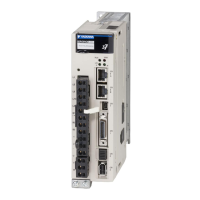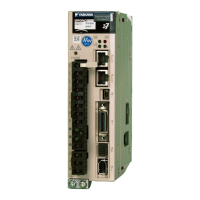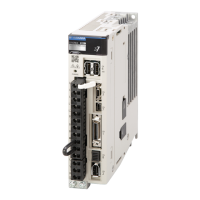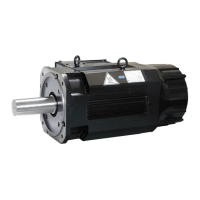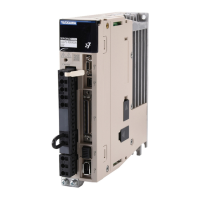2.2 SERVOPACK Overload Protection Characteristics
2-4
2.2 SERVOPACK Overload Protection Characteristics
The overload detection level is set for hot start conditions with a SERVOPACK surrounding air tem-
perature of 55°C.
An overload alarm (A.710 or A.720) will occur if overload operation that exceeds the overload pro-
tection characteristics shown in the following diagram (i.e., operation on the right side of the appli-
cable line) is performed.
The actual overload detection level will be the detection level of the connected SERVOPACK or Ser-
vomotor that has the lower overload protection characteristics.
In most cases, that will be the overload protection characteristics of the Servomotor.
• SGD7W-1R6, -2R8
Note: The above overload protection characteristics do not mean that you can perform continuous duty operation
with an output of 100% or higher.
For a Yaskawa-specified combination of SERVOPACK and Servomotor, maintain the effective torque within
the continuous duty zone of the torque-motor speed characteristic of the Servomotor.
• SGD7W-5R5, -7R6
Note: The above overload protection characteristics do not mean that you can perform continuous duty operation
with an output of 100% or higher.
For a Yaskawa-specified combination of SERVOPACK and Servomotor, maintain the effective torque within
the continuous duty zone of the torque-motor speed characteristic of the Servomotor.
100
10000
1000
100
10
1
Detection time (s)
SERVOPACK output current
(continuous output current ratio) (%)
Instantaneous maximum output current
(Instantaneous maximum output current)
Continuous output current
(Continuous output current)
× 100%
230
100 200
10000
1000
100
10
1
Detection time (s)
SERVOPACK output current
(continuous output current ratio) (%)
Instantaneous maximum output current
(Instantaneous maximum output current)
Continuous output current
(Continuous output current)
× 100%
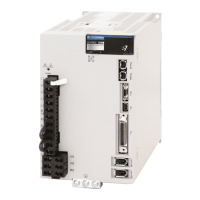
